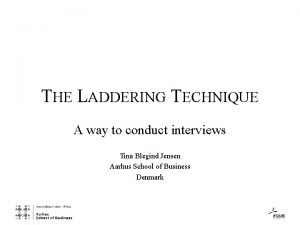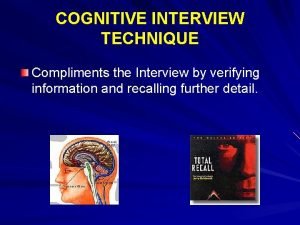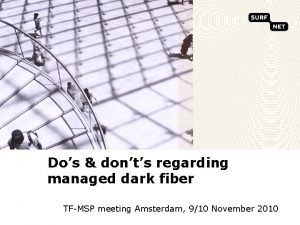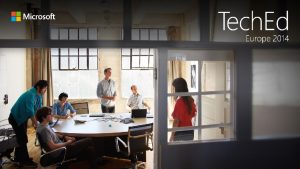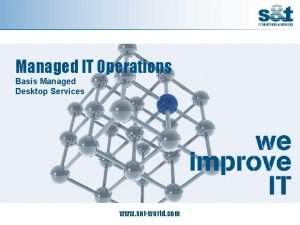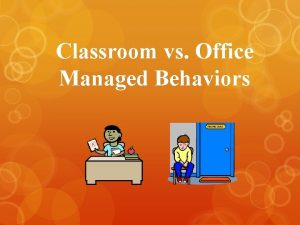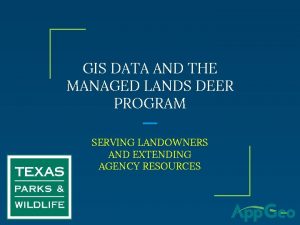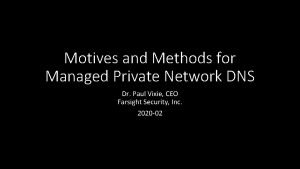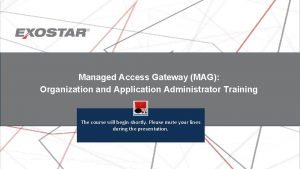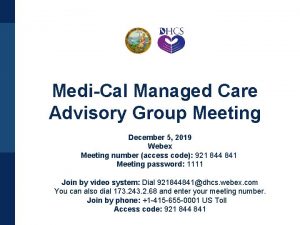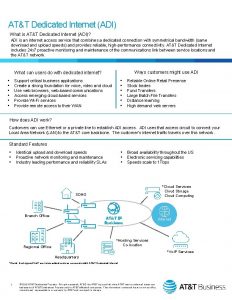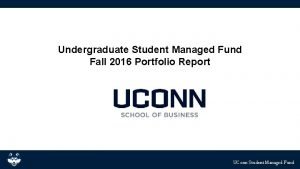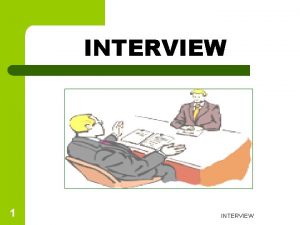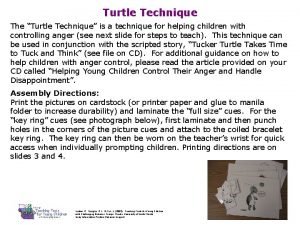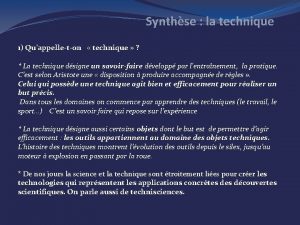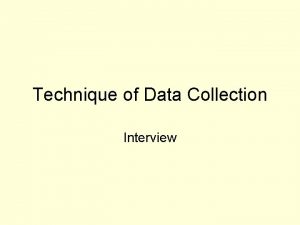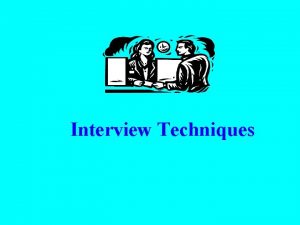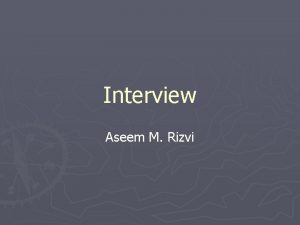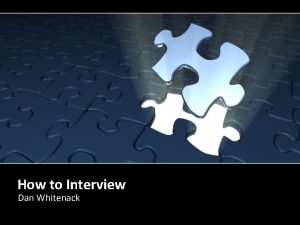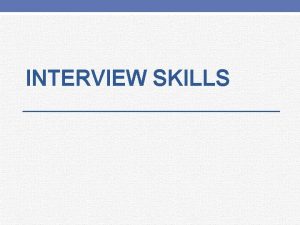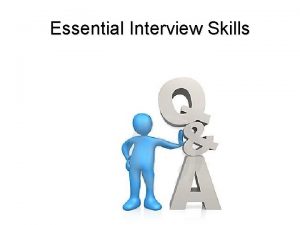Interview as a technique Interview is a managed















- Slides: 15

Interview as a technique Interview is a managed verbal exchange data collection technique through direct oral and personal communication of the interviewee and interviewed. TEHNIKA PRIKUPLJANJA PODATAKA ISPITIVANJEM PUTEM NEPOSREDNOG USMENOG I LIČNOG OPŠTENJA ISPITIVAČA I ISPITANIKA. Goal: obtaining truthful statements about perceptions, opinions, knowledge, ideas… of the interviewed.

Free/unstructured to structured u u Consider types of interview as the continuum; any particular interview can be placed somewhere b/w ‘unstructured’ and ‘structured’. The ‘unstructured’ pole is closer to observation, while the ‘structured’ use of ‘closed’ questions is similar to types of questionnaire NEUSMERENI INTERVUJU JE RAZGOVOR U KOME ISPITIVAC ODABIRA SADRZAJ, OBILIK I REDOLSED PITANJA SAGLASNO SOPSTVENOJ PROCENI KARAKTERISTIKA ISPITANIKA I SITUACIJI U KOJOJ SE VODI RAZGOVOR. USMERENI INTERVJU IMA VEOMA PRECIZNO I SVESNO RAZRADJEN INSTRUMENT I POSTUPAK. JEDNA OD PODELA: USMERENI ORIJENTACIONI INTERVJU DIRIGOVANI I RIGOROZNI

SEMISTRUCTURED - DEF u u u Technique used to collect qualitative data by setting up a situation that allows respondent time and scope to talk about their opinions; flexible. The focus is decided by the researcher with a goal to understand the respondent’s point of view; explore The researcher tries to build a rapport relationship of mutual trust and the interview is like a conversation.

ADVANTAGES u u High validity - talk in detail and depth, provides the opportunity to generate rich data; Complex questions and issues can be discussed and clarified – picking up information of which the interviewer had no prior knowledge; Avoids pre-judgement – predetermination what will or not will be discussed as only small number of pre-set questions Language use by participants essential in gaining insight into their perceptions and values.

LIMITATIONS Time consuming; u Depends on the skill of the interviewer - ability to think during the interview (who will do it? ) u Possibility of unconscious signals – clues about expected answers; u Depth of qualitative information may be difficult to analyze/use. u

STYLE AND SEQUENCING Explain the purpose, time, use; confidentiality, recording – ethical issues u Gaining rapport – putting respondents at ease (‘talk with you’ less threatening that ‘interview you’); move from easy, less sensitive issues to more complex Prove you are listening – summarize the statement in the same language If don’t understand, better: When would you that, what would you use that for? Instead of: What you mean by that? u

GRAND TOUR QUESTIONS Ask respondent to give a verbal tour of something they know well: Could you describe a typical day at your workplace/at computer? u Specific grand tour questions – Walk me through what you/school/ company did in response to the incident? u Guided grand tour – Could you bring me along and show me what you do? (i. e. Internet bulling; gambling u

QS AND PROMPTS u u u The act or event identified by the respondent – ask for an example in its own words: What you would call that? Structural questions: ask to structure its world: I’d like to know about all the different types/issues PROMPTS not questions but equally important as do two things: keep people talking and rescue when responses turn to mush. Planned: probe about who they are speaking with about this issue, for example Informal – How interesting Floating prompts: How? Why? And then?

CLOSING Do not rush and try to control too much as you may miss important, unexpected points – this is the key! u Close by thanking and repeating confidentiality and purpose u Make notes ASAP with observations u Keep details about gender, age, background u

Roma population and security sector in Serbia Perceptions about security – what makes you insecure? (Q 1) u u u Da li se osećate dobro, bezbedno? Šta vas licno ugrožava? Šta Vas plaši? Šta su pretnje za Vas i Vašu porodicu? Sta vi mislite da su pretnje za vasu zajednicu? Od čega strahujete u budućnosti?

FREQUENCY OF VIOLENCE and ACTION u u u u u Da li Vam je neko pretio nasiljem? WHO? Da li ste bili u situaciji da Vas neko fizički napadne? PROMPT: WHEN, HOW FREQUENTLY? Da li je neko iz Vaše porodice bio suočen sa nasiljem ili pretnjom nasiljem? Da li je neko iz Vaše zajednice ili okoline…? Q 2: WHAT THEY DO ABOUT IT? Da li je neko iz Vaše zajednice ili okoline reagovao u toj situaciji? Kako Vam je pomogao? Ko obično reaguje u takvim situacijama? Kome biste se prvo obratili u takvoj situaciji u budućnosti?

NEED FOR INSTITUTIONS TO CHANGE? u u u u Koliko često dolazite u kontakt sa vojskom ili policijom? Da li ste u poslednjih 6 meseci bili u kontaktu? U kojima okolnostima dolazite u kontakt sa vojskom ili policijom? Kakva su Vam iskustva iz tih kontakta? Da li ste služili vojsku? Da li biste radili u vojsci ili policiji? Zašto? Da li neko iz Vaše zajednice ili okoline radi u vojsci ili policiji? Da li mislite da je potrebno da više Roma radi u vojsci i policiji? -

TRUST/INCLUSION/CHANGE u u u Da li verujete vojsci? Zašto? Da li verujete policiji? Zašto? Uporediti vojsku i policiju. Da li vidite neke promene u radu vojske i policije u poslednje vreme? Koliko poverenja imate u: vojsku, policiju, crkvu, centar za socijalni rad, školu, kolege sa posla, prijatelji i kumovi, porodica, koordinator za romska pitanja, zdravstvene medijatorke, lokalni političari…

WHAT NEEDS TO CHANGE Da li mislite da se vojska i policija drugačije odnose prema Vama zato što ste Romi? (LGBT or other group) u Da li mislite da bi vojska i policija trebalo drugačije da se odnose prema Vama zato što ste Romi? u IS THERE SOMETHING YOU THINK WE SHOULD COME BACK TO ADD? u

EXAMPLE State-community security cooperation model at local level contributes to more responsive policing that better meets community needs Break down to themes/issues/indicators Start with general, contextual: are there same improvements of security in the state/village? regularity of community policing officers’ interaction with the community, his/her availability to the communities, and community policing officers’ role in the interaction, perceptions about the officers behavior, and possibilities for having the police officers accountable.
 Behavior descriptive interview technique
Behavior descriptive interview technique Laddering interview
Laddering interview Cognitive compliments
Cognitive compliments Managed services hertfordshire
Managed services hertfordshire Managed dark fiber
Managed dark fiber Managed mobile productivity
Managed mobile productivity Managed desktop services
Managed desktop services Classroom vs office managed behaviors
Classroom vs office managed behaviors Cea registry
Cea registry Lma tpwd
Lma tpwd Managed private network
Managed private network My exostar
My exostar Michelle retke
Michelle retke Adi with managed router
Adi with managed router Uconn student managed fund
Uconn student managed fund Fully managed edi
Fully managed edi

